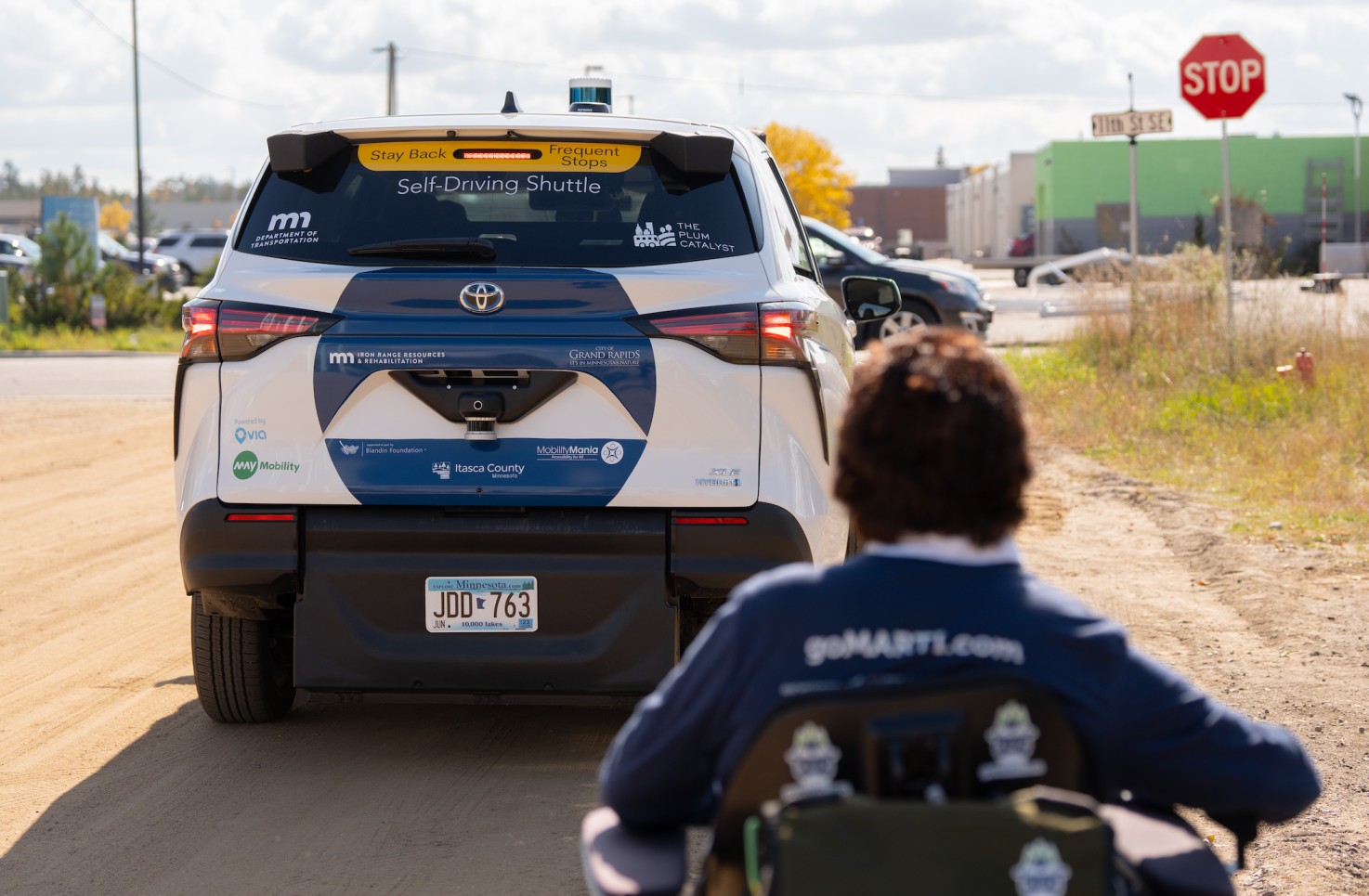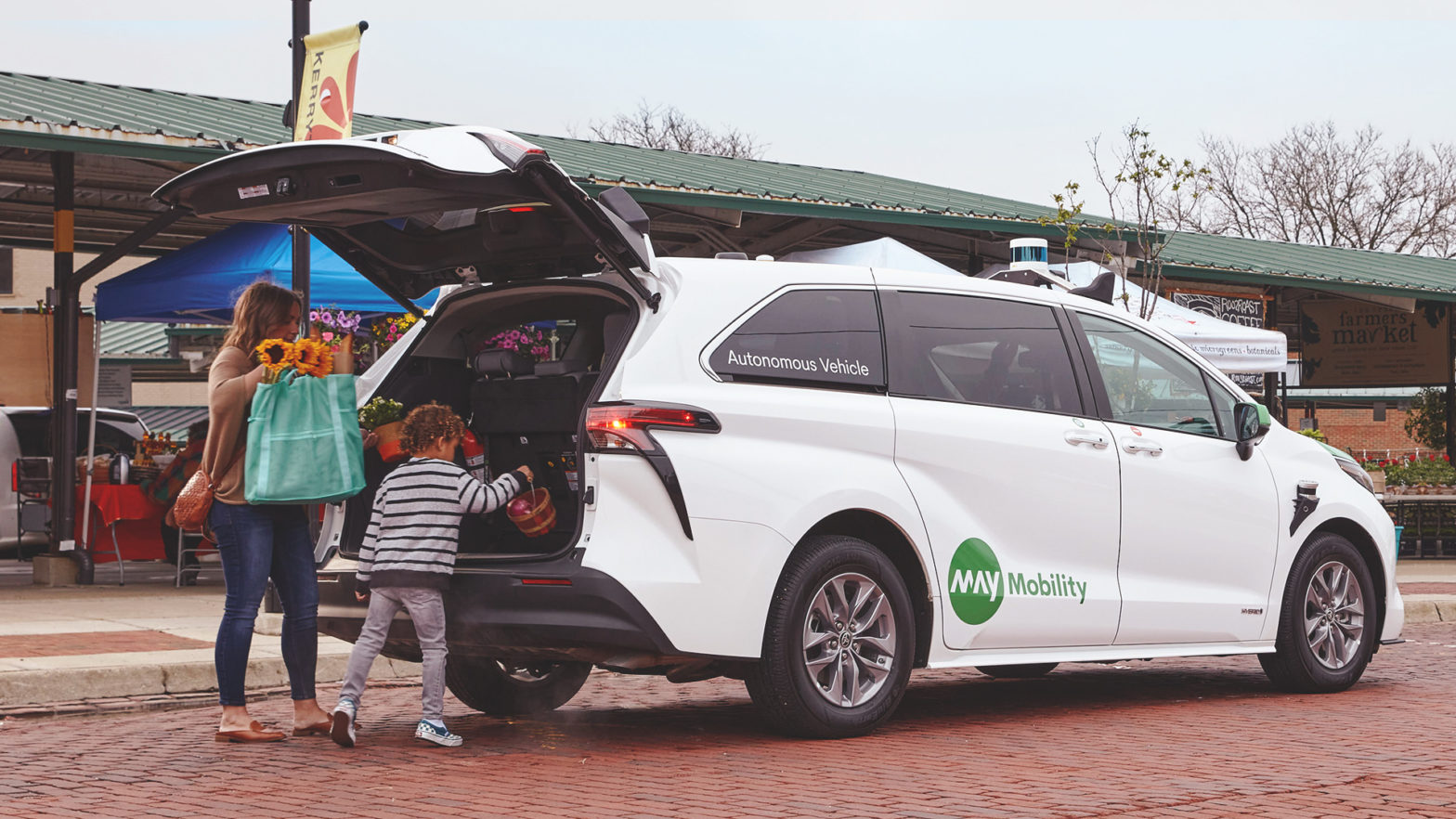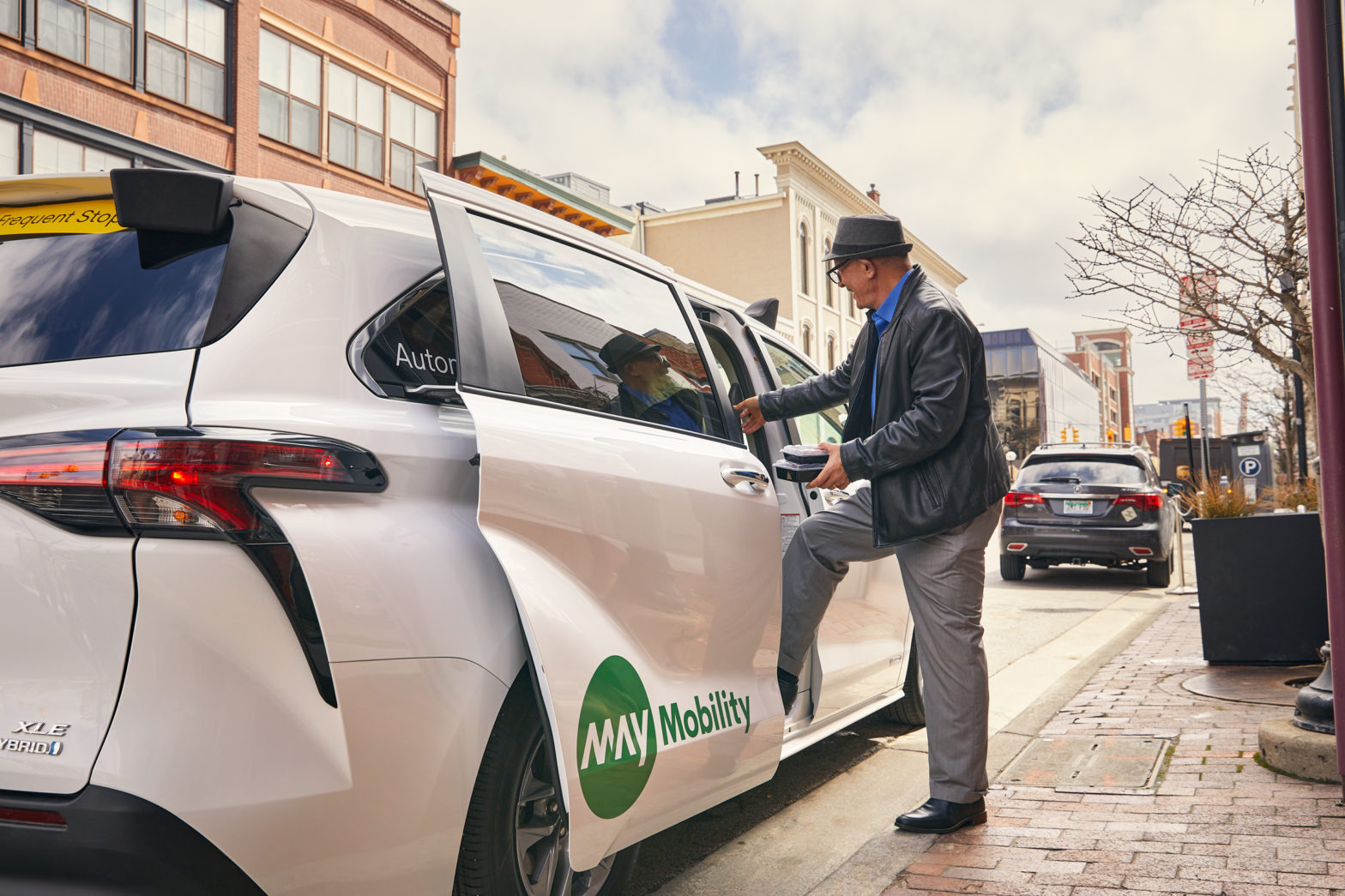
Photo: May Mobility
How AVs are increasing options for people with disabilities
30 May 2023
Autonomous vehicles (AVs) are helping to open up transit to people with disabilities and other underserved residents by filling gaps where demand was previously unmet.
“AVs are providing an opportunity to develop a transportation system that treats accessibility as a guiding principle, not as an afterthought,” says William Riggs, Programme Director and Associate Professor at the University of San Francisco in a new whitepaper produced by Cities Today Studio in partnership with May Mobility. “We have capacity to reach people in new ways with multilingual services, and different types of surfacing and audible technology which we’ve never had before.”
For people with disabilities, the elderly and residents who live in underserved communities, barriers exist to accessing reliable transit. People with mobility issues may find it difficult to use public transport, and often rely on specialised services such as paratransit. However, these services can be expensive, may require advance scheduling, and have limited availability.
According to the 2010 Census, up to 1 in 5, or 57 million people, in the US have a disability. AV microtransit can play an important role in helping disabled people achieve their desired level of mobility, and reverse the currently suppressed demand for travel. Riggs found that people aged 18 to 64 with disabilities make 28 percent fewer trips per day (2.6 v. 3.6 trips) on average than people without disabilities. The disparity is even more significant for non-workers.
“In the US, 3.6 million people do not leave their homes because of travel-limiting disabilities,” said Eric Harman, Senior Manufacturing Manager for May Mobility. “Ensuring that autonomous vehicles are developed in a way that advances transportation equity is a key pillar for May Mobility, and we’re working toward a future where everyone has accesss to safe, reliable transportation.”
Providing an equitable service

“It’s really hard from an operational standpoint for transit agencies to provide equitable service across a city and particularly to do so in a cost-effective way,” Riggs says.
He believes that if accessibility is integrated into the current “AV revolution,” it will be considered a fundamental principle rather than an afterthought.
Whether it’s a person with disabilities who needs access to transit in a timelier way or someone who lives in a historically marginalised place that hasn’t been well served by transit, autonomous platforms offer an opportunity to serve areas where it was never cost-effective from the transit operator’s standpoint.
“That’s the biggest promise from a service standards standpoint,” Riggs says. “The ability to access large parts of the city that were really untouched by transit in the past.”
Historically, given the often limited and patchwork nature of local transit funding, it has been difficult to equitably and sufficiently serve all neighbourhoods, even those that need it most.
“New forms of transportation [like AV microtransit] allow us to open the service capacity to these locations that have traditionally been underserved and under-resourced,” he says. “Therefore, increasing access to jobs, increasing access to employment opportunities, and ultimately providing social mobility outcomes for people that have traditionally not had those ladders up.”
Pilot success
The white paper explores two pilots led by May Mobility being undertaken in Grand Rapids, Minnesota, and Arlington, Texas, and AV programmes in North Carolina. All three feature accessible components in their trials.
The major driving force behind the trial in Grand Rapids was to provide safe, accessible mobility for residents, especially those with transport challenges. Out of the five-vehicle fleet, three vehicles are wheelchair-accessible and the service includes 70 pick-up and drop-off points in key locations across the community.

“We made sure it went by most of our Housing and Redevelopment Authority complexes,” explains Tom Pagel, City Administrator, Grand Rapids. “We wanted to serve those who are more vulnerable or who lacked transportation. We then linked those areas to all of our public schools, medical facilities, and primary grocery needs.”
In Arlington, Texas, the city’s AV programme includes a fleet of five vehicles, one of which is wheelchair-accessible. The pilot also allows the rider to choose between a non-autonomous or an autonomous vehicle. The majority of the time people are choosing the AV option, and according to Foss acceptance of AVs is between 75 percent and 90 percent.

The service has proved popular. In the first year, over 28,000 rides took place and at the busiest times of the year, the five vehicles were averaging close to 200 rides a day. Approximately 50 percent of the rides were shared. The city wants to see shared ridership increase as the fleet is updated to include more passenger capacity.
“AVs are a new tool that should be used to improve and evolve transit systems as opposed to being another thing on top of it,” says Sarah Gryniewicz, Senior Strategy Analyst, May Mobility.
“The more it is integrated and coordinated, the more people can use Mobility-as-a-Service as a legitimate option. We see on-demand AVs as a part of the network and helping enhance the network but not an entire network unto itself.”
To download the whitepaper see: https://maymobility.com/resources/how-autonomous-vehicles-are-making-transportation-more-inclusive/
Brought to you by:








